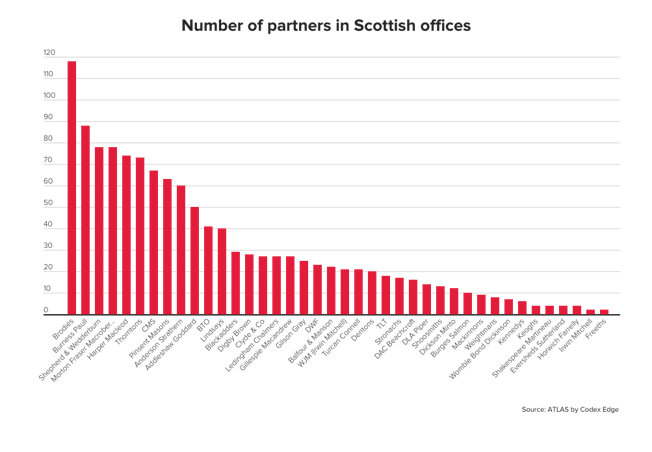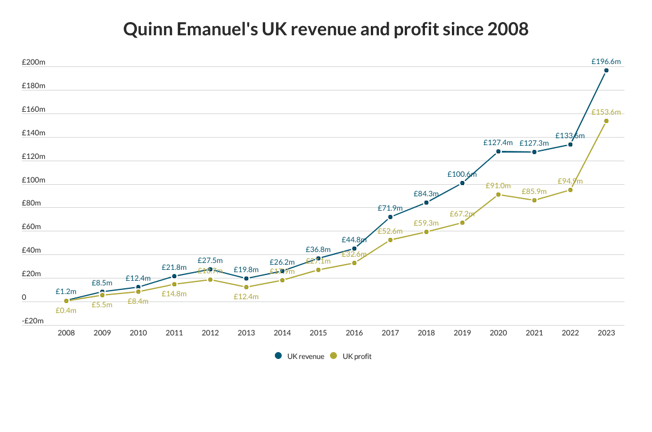DWF has emerged as the firm with the highest level of total borrowings in the UK 200, with the firm’s debt having increased each year since 2013 to the current level of £36.5m.
Several firms in this year’s UK 200: Financial Management report, which will be published next Monday (13 November) saw their total level of debt grow during 2016/17 while a number have seen it rise consistently since The Lawyer began reporting borrowings data.
Shoosmiths saw a 128 per cent increase in total borrowings from £7.6m to £17.3m in 2016/17 following a period of significant investment in its office network. The firm’s total lock-up is also longer than the majority of firms at 177 days, consisting of 125 days WIP and 52 debtor days, a rise of six days from 46 at year-end 2015/16.
According to the firm’s managing partner Claire Rowe, this is all part of a wider plan.
“The last two years have seen significant investment all to aid the delivery of our strategy,” said Rowe, who highlighted the firm’s move towards open plan and agile working in a phased office-by-office rollout in particular as a significant development.
“We’ve had a change programme but it’s never ending, every year you have to assume you’ll be enhancing your systems,” added Rowe. “And you need to fund it. But the investments and borrowings are planned to reduce over a period of time as we recoup that investment.”
Certainly the indications are positive at Shoosmiths, which saw a fifth consecutive year of turnover growth in 2016/17 and a 13 per cent rise in net profit.
“Productivity is improving and the trajectory is up,” said Rowe. “That’s reflected in our profit numbers.”
And while the firm’s total lock-up looks long at 177 days (125 days WIP and 52 debtor days, up by six from 46), director of finance Chris Stanton pointed out that the firm has always had historically higher levels of lock-up than most of its competitors.
“We have a good-sized clinical negligence practice and the quality of the work means those cases can take years,” said Stanton. “Our lock-up numbers outside of that are much more normal, in the region of two to three months.”
The firm with the highest level of total borrowings this year is DWF, which had £36.5m at year-end 2016/17. Net debt as a proportion of total firm-wide revenue has also been rising at DWF for the past five years. In 2013 it stood at 8 per cent. Last year, with its net debt of £33.8m on a total turnover of £201.2m, that had risen to 17 per cent.
Total borrowings have also been on the increase, from £14.5m in 2012/13 to £36.5m last year, or 157 per cent. Over the same period DWF’s total turnover has grown by 7 per cent from £188.2m to £201.2m.

Andrew Leaitherland, DWF’s managing partner and CEO, has overseen an accelerated expansion programme over the past few years, largely focused on mergers, which has taken DWF’s turnover from £34m to £201.2m (the fastest period of growth was longer than five years ago while in recent years growth has slowed, despite the firm posting an 8 per cent increase between 2015/16 and last year’s £186.9m).
At the same time DWF’s focus and client base has also moved, shifting from being one that is exclusively focused on the UK to one that is increasingly international (albeit with a platform that, from a revenue generation perspective, remains primarily focused on the UK, with in excess of 90 per cent of turnover generated here).
Both the turnover growth and international expansion have required funding, as Leaitherland points out.
“Like all firms, we fund the business and our growth through a combination of external borrowings, capital, retained earnings and tax balances,” he said. “This year we have made some significant investments which continue to fuel strategic growth and expansion, and while these naturally take more than a year to demonstrate return, we take a long-term view of the value they will deliver for us and our clients.”
Leaitherland highlighted the fact that every firm will have a different mix of funding based on its overall funding strategy, where it is in its investment cycle, tax planning approaches and overall business and lockup performance.
“A comparison of individual elements of that funding with other firms, particularly when looking at a single point in time, cannot be truly meaningful,” Leaitherland claimed. “The metrics are so varied and there is no single barometer you can use, in isolation, to indicate financial health.”
This is an extract from the UK 200: Financial Management Report 2017. For more information about the content of the report please contact Matt Byrne on 0207 970 4558 or at matt.byrne@centaurmedia.com. To purchase the report please contact either Gilberto Esgaio on +44 207 970 4191 or gilberto.esgaio@centaurmedia.com or Letitia Austin on +44 207 970 4662 or letitia.austin@centaurmedia.com.































